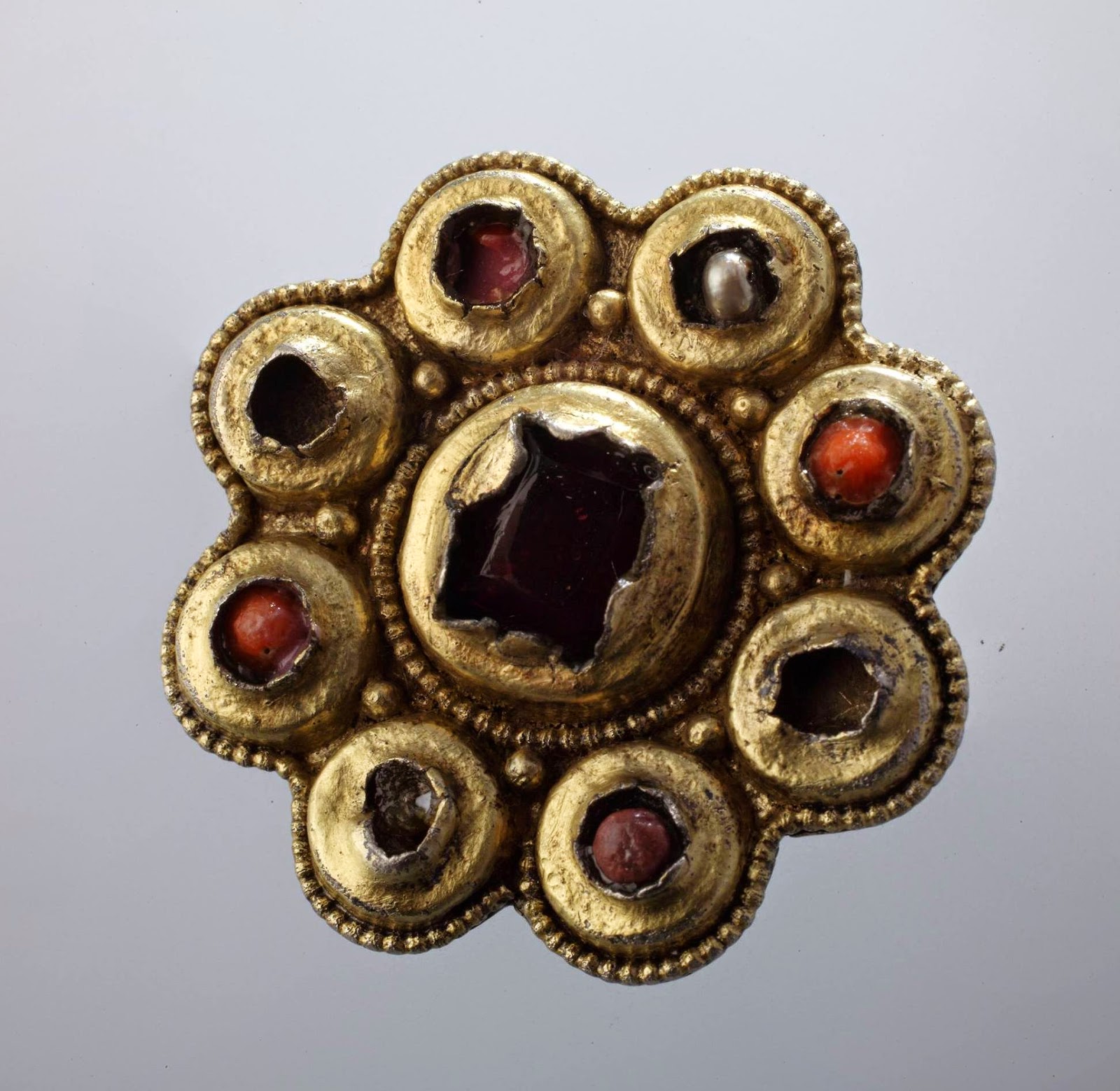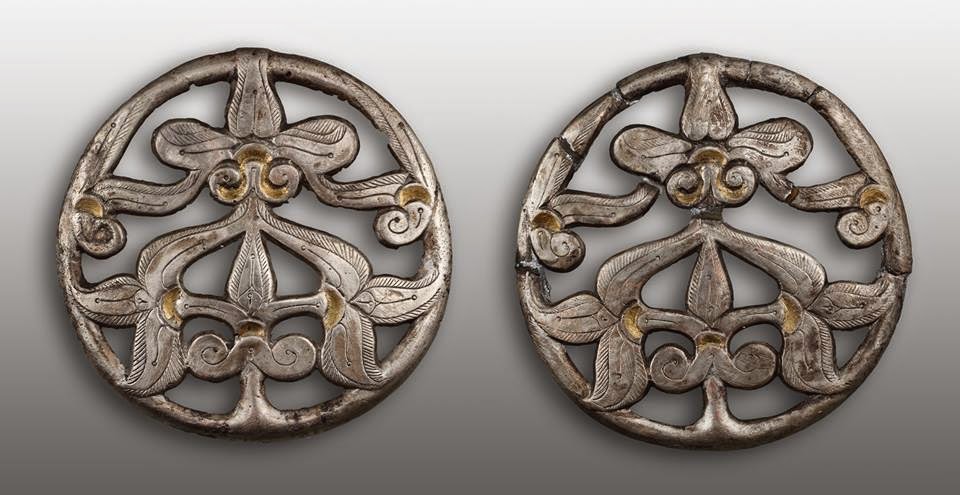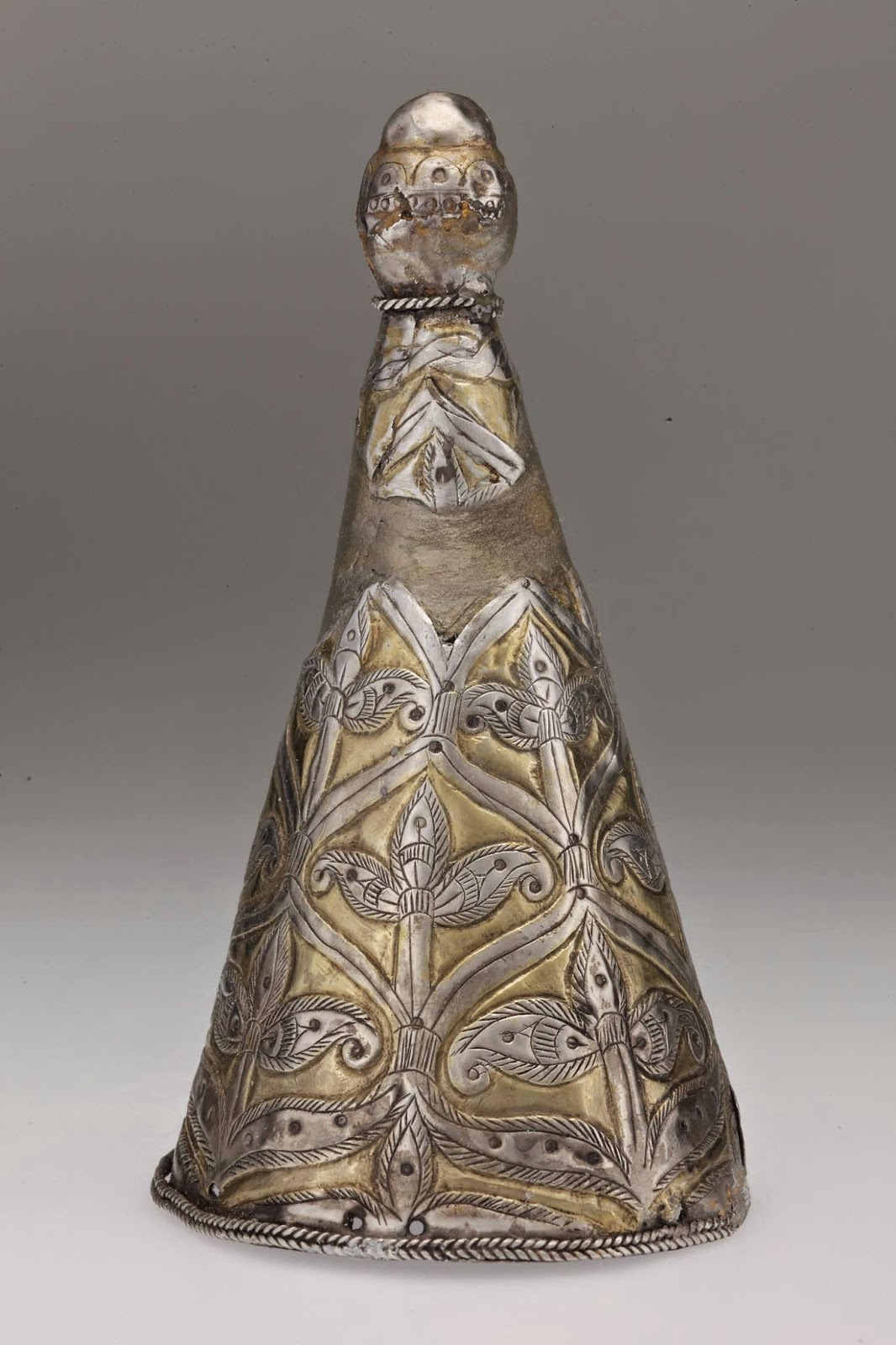Medieval History
A new, long-missing section of the permanent archaeological and historical exhibition of the Hungarian National Museum opened yesterday. The exhibition - which is the continuation of the rooms dedicated to the history of Hungary from prehistory to the Migration period - is focusing on Hungary during the 9th and 10th centuries, and consists of two parts. The first part is dedicated to the 9th century, especially to the western, Transdanubian region - the area of the Roman province of Pannonia - which was part of the Carolingian empire. The exhibition displays for the first time a large selection of the sensational discoveries made at the Zalavár excavations. Finds from the churches and palaces of this important late Carolingian center - including some of the oldest stained glass fragments from Europe, as well as a complete bell foundry - make up perhaps the most interesting part of the new exhibition. The second part contains objects from the period of the Hungarian (Magyar) Conquest of the Carpathian basin, and finds from the 10th century, the period before the formal establishment of the Christian Kingdom of Hungary.
- Hungarian Archaeological Journals Online
I would like to call attention to two (actually, three) Hungarian online journals, dedicated to archaeology. The first one is directly relevant to the topic of my blog, as it generally deals with medieval archaeology. Titled Archaeologia - Altum Castrum...
- Remains Of Carolingian Palace Found At Zalavár
The church of St. Hadrianus at Mosaburg/Zalavár (from Wikipedia) The area of Zalavár in western Hungary has long been one of the most interesting archaeological sites of medieval Hungary, especially for the Carolingian period. The area has been idetified...
- Conquest-period Sabretache Plate Found At Hungarian Excavations
Sabretache plate excavated in Pest county Photo from Sírásók naplója blog A Hungarian archaeological blog (Sírásók naplója) reported on a recent lucky find in Pest county of Hungary. Last week, remains from the period of the Hungarian Conquest...
- Then And Now - Hungarians In Margat
The exhibition on Hungarian excavations at the Crusader castle of Margat, Syria, is opening at the Hungarian National Museum (Budapest) on December 17. You can read about Margat and these excavations in my previous post. If you would like receive up-to-date...
- Medieval Winged Altarpiece To Travel To London
After the London exhibition of the Liechtenstein collection was canceled, plans were quickly made to fill the void with an exhibition based on the holdings of Hungary's premiere art museum, the Museum of Fine Arts (Budapest). An article in the Guardian...
Medieval History
Permanent exhibition of 9-10th Hungary opens at Hungarian National Museum
 |
| Dress ornament from Zalavár (Photo: Hungarian National Museum) |
 |
| Ornamental discs from the Hungarian Conquest period (Photo: Hungarian National Museum) |
Taken together with the preceding part of the exhibition, this is the largest archaeological exhibition in Hungary, and one which is also quite informative and well-installed. Monitors with 3D-reconstructions and other interactive elements make the exhibition even more interesting for younger visitors as well. Ágnes Ritoók of the Hungarian National Museum acted as chief curator of the project, coordinating the work of two teams. This new exhibition is accompanied by two separate publications: one, written by Béla Miklós Sz?ke, is dedicated to Zalavár and the Carolingian period in Hungary, the other - the work of László Révész - is about the Conquest period. Both books were also published in English - so you can expect to read more about them on this blog soon.
 |
| Cap ornament from Beregszász (Photo: Hungarian National Museum) |
The website of the National Museum has some technical problems, so I am linking here to the Facebook page of the Museum. The photos in this post come from there.

- Hungarian Archaeological Journals Online
I would like to call attention to two (actually, three) Hungarian online journals, dedicated to archaeology. The first one is directly relevant to the topic of my blog, as it generally deals with medieval archaeology. Titled Archaeologia - Altum Castrum...
- Remains Of Carolingian Palace Found At Zalavár
The church of St. Hadrianus at Mosaburg/Zalavár (from Wikipedia) The area of Zalavár in western Hungary has long been one of the most interesting archaeological sites of medieval Hungary, especially for the Carolingian period. The area has been idetified...
- Conquest-period Sabretache Plate Found At Hungarian Excavations
Sabretache plate excavated in Pest county Photo from Sírásók naplója blog A Hungarian archaeological blog (Sírásók naplója) reported on a recent lucky find in Pest county of Hungary. Last week, remains from the period of the Hungarian Conquest...
- Then And Now - Hungarians In Margat
The exhibition on Hungarian excavations at the Crusader castle of Margat, Syria, is opening at the Hungarian National Museum (Budapest) on December 17. You can read about Margat and these excavations in my previous post. If you would like receive up-to-date...
- Medieval Winged Altarpiece To Travel To London
After the London exhibition of the Liechtenstein collection was canceled, plans were quickly made to fill the void with an exhibition based on the holdings of Hungary's premiere art museum, the Museum of Fine Arts (Budapest). An article in the Guardian...
